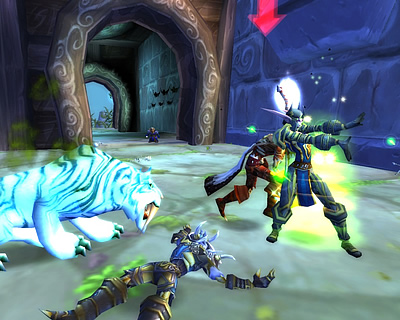By now, you are sure to know about the Linden Lab's ban on in-world banking. At a glance, it seems like a reasonable decision: the banking activity in Second Life was often suspicious, and it has had its fair share of scandals. But what might it mean for the long-term future?
On Monday, I attended the Metanomics event featuring Robin Linden. The Metanomics events are often boring, especially the ones featuring Linden VP's. Last year, we had Ginsu Linden, whose answer to the questions ranging from in-world monetary policy to the laws of supply and demand was the mantra "Second Life is a product". This one was no exception, except that Robin's mantra reply to the questions ranging from land zoning to JIRA and reputation systems was "It's very hard, so we are focusing our efforts elsewhere", peppered with an occasional "Well, if the community implements something, we might use it".
(hint to surviving Metanomics events without falling asleep: watch it at Muse Isle, where the atmosphere is fun and joking constant)
Boring as Linden VPs may be, they do provide an insight into the workings of Linden Lab and the future of Second Life. Briefly stated, their problem-solving algorithm is:
- A problem arises in Second Life
- Problem grows worse; L$ are lost, blog posts on the topic abound, possible solutions are put forward
- The JIRA is mobbed
- Time passes
- Some more time passes
- Linden Lab implements a quick fix by either:
- banning the activity in question
- extending RL governance to the SL activity in question
The essential premise of Second Life and its biggest competitive advantage is freedom - freedom of creation, freedom of communication, freedom of interaction. Of course there must be some limits to freedom; but instead of giving us the mechanisms to evolve these limits, Linden Lab simply stamps the real-world solution on the troubled area. Problem with the banks in Second Life because there is no regulatory body with authority and tools to regulate banking? No problem - let's allow only real-world banks which conform to real-world restrictions. Bit by bit, they are making Second Life a carbon copy of First Life - just with wings and furry avatars.
An aside: Linden Lab states that Linden dollars are "fictional currency". So why must you have a real currency bank certificate to open a bank in Second Life? Wouldn't a certificate of fictionality be more appropriate? I fear that LL has opened a Pandora's box with this decision - it will be interesting to see how the future develops.
Am I concerned about my Second Life? Yes and no. I love Second Life, but what exactly do I love about it? The crashing viewer and an abundance of Ruths? No - I love the way it enables me to communicate with others, by creation or by interaction. Exactly who provides that service is unimportant in the long term. Once something has been done, it's easy for another to copy and improve it. If Second Life fails, I have no doubts that a Third Life will await me down the road.
I offer no concrete suggestions to Linden Lab; other posters have done that better than I could have. I do have one advice for Robin Linden, the "VP for community", though: make deciding about the "hard" issues your priority. They (and not viewer stability, GRID architecture or banking regulation) are key to Linden Lab's and Second Life's future.















